Part 2. Think Tactics acoording to Vectors
2.7. Defense against Attacks
After the third pitch attack, let us try to consider about the blocks.
Here, we will talk the way you deal with a powerful drive from the opponent.
Don't you think you have to face more strongly against the opponent's strong Drive, Do you?
When the opponent spin is faster than your swing speed, the ball will fly far away in the upward direction by rubber repulsion.
If you swung stronger in order to add more spin, the ball would fly further away.
The block has two ideas, both of which are important.
The first way is the return using repulsive force of the Drive from opponent.
The second way is changing spin direction from the Drive of opponent.
2.7.1 Technique to return the ball by the Drive reaction force from the opponent
Let us look again the figure in the "Angular Momentum at the Impact Point" of Part 1 Basis.
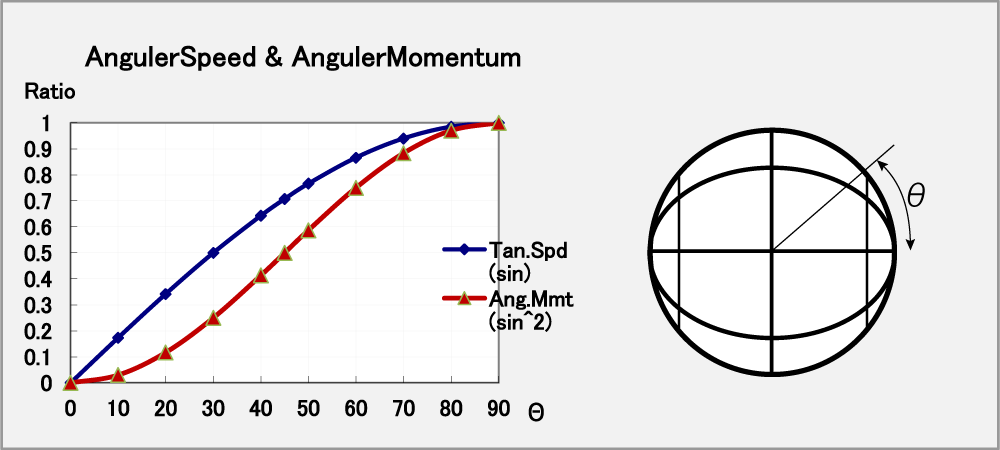
Even if the ball had strong drive, when you could move the ball hitting angle to the pole direction, its reaction force was to become smaller in sin ^ 2 curve. Thus at the hit point angle 45゜, the reaction force becomes 0.5, so the ball never jump out from the table.
The following points should be noted.
- Since the reaction force works in parallel for the racket, you tilt the racket head forward and hit the ball left shoulder.
- At the moment the racket hits the ball, the racket should be fixed firmly, and should not be pushed out forward.
- Adjust to fit the hitting angle to the opponent's spin speed.
- Catch the ball near your bosom in order to increase the return stability. And predict the hitting point, quickly move your body to the left or right.
A good thing about this technique, since you hit the ball just with the racket without swing, you are able to follow the opponent's fastball without swing delay.
2.7.2. How to alter the spin direction of opponent's Drive
If you understand the spin composition, you can select a countermeasure. These techniques have the way to give another spin of Curve/Shoot or Clock/Clock to the Drive.
2.7.2.1. Block the Drive by Curve or Shoot
This block can be obtained by swinging the racket as a wiper to the lateral direction. that is you rub the ball front to the left or right direction.
By doing so, the spin axis tilts into the vertical direction and the force of upward direction is reduced.
The ball does not jump out from the table because this swing does not swing forward.
When actually you do, you will be able to see the ball reach deeply into the opponent's court.
This technique has two ways giving the Curve or Shoot.
(A). Block the Drive by Curve
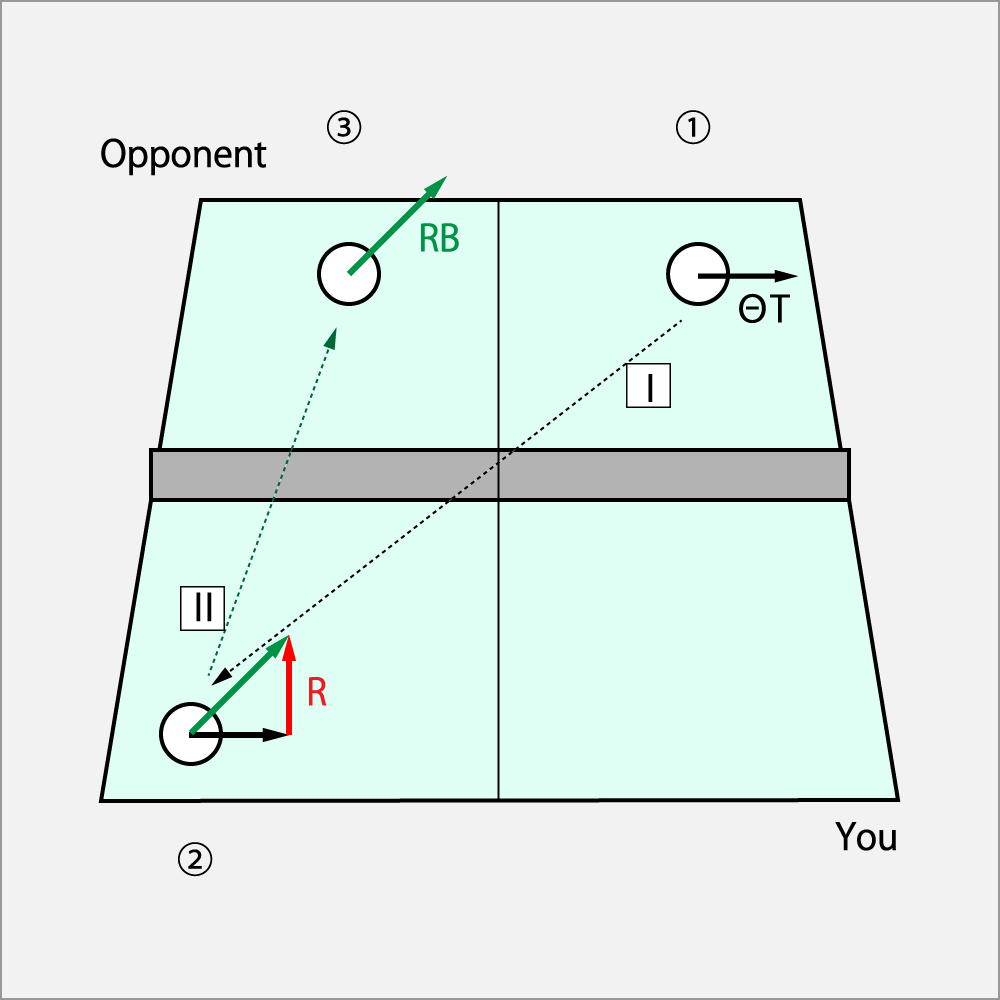
① The opponent has serviced with ΘDrive (ΘT) to your racket backside .
② You block with Curve (R) to the spin on the line Ⅰ.
③ The ball will be returned as a Curve⋅Cut (RB) on the Ⅱ to the opponent's coat.
Equation is the following.
Curve⋅Cut = ΘDrive + Curve
When expressed in English initials,
RB = ΘT + R
(B). Block the Drive by Shoot
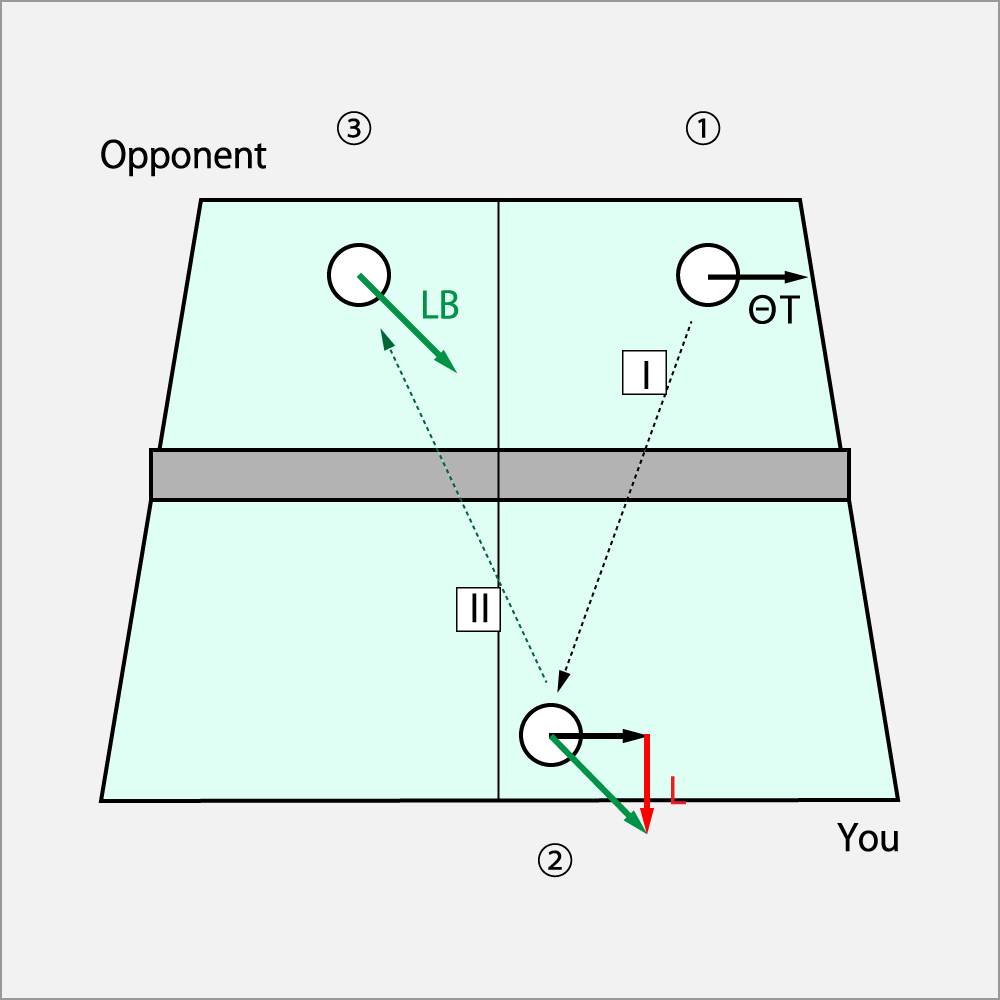
① The opponent has serviced with ΘDrive (ΘT) to your racket foreside.
② You block with Shoot (L) to the spin on the line Ⅰ.
③ The ball will be return to the opponent as Shoot⋅Cut (LB) on the Ⅱ to the opponent's coat.
Equation is the following.
Shoot⋅Cut = ΘDrive + Shoot
When expressed in English initials,
LB = ΘT + L
2.7.2.2. Block the Drive by Clock or Cclock
This block will rub the ball's apex to the lateral direction by the swing with the racket holding horizontally.
By doing so, the spin axis tilts into the right or left direction, the force of upward direction is reduced.
The ball does not jump out from the table because this swing does not swing forward.
When actually you do, you will be able to see the ball reach deeply into the opponent's court.
This technique has two ways giving the Clock or Cclock.
(A). Block the Drive by Clock
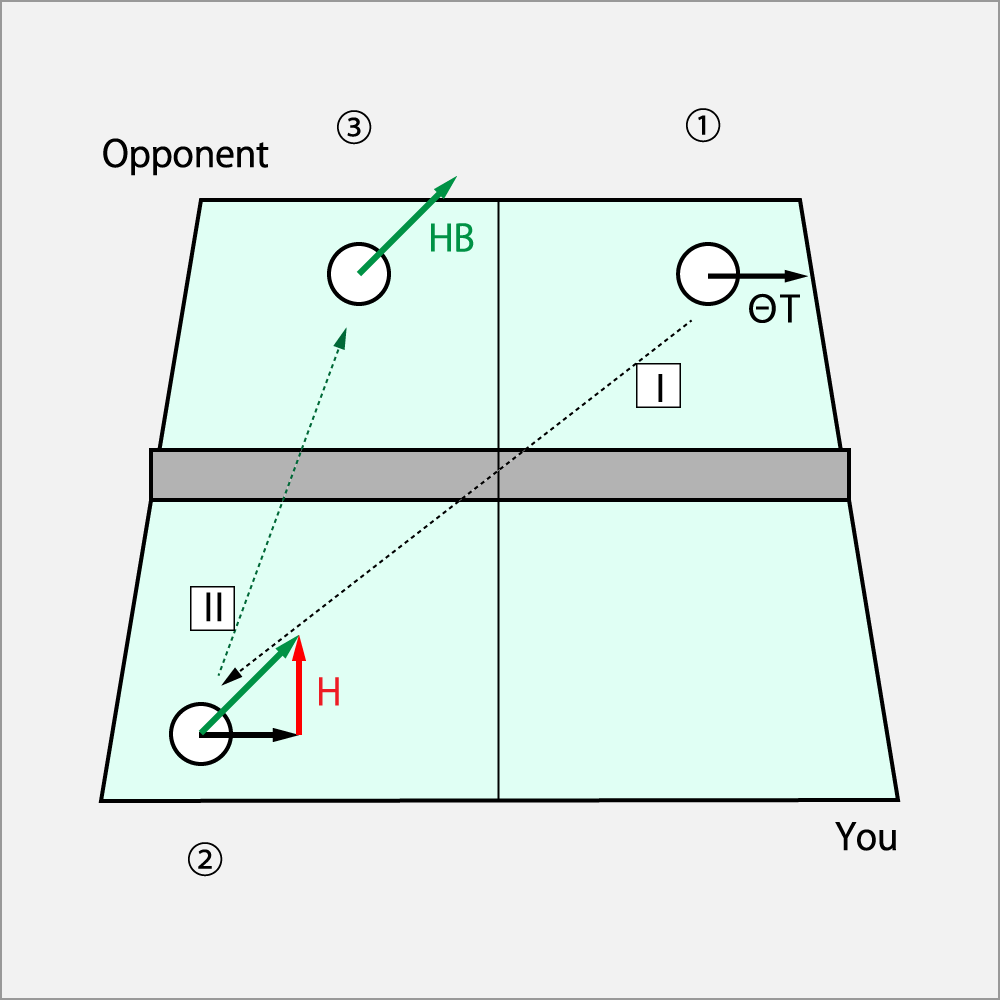
① The opponent has serviced with ΘDrive(ΘT) to your racket backside .
② You block with Hcork(H) to the spin on the line Ⅰ.
③ The ball will be return to the opponent as Hcork⋅Cut(HB) on the Ⅱ to the opponent's coat.
Equation is the following.
Hcork⋅Cut = ΘDrive + Hcork
When expressed in English initials,
HB = ΘT + H
(B). Block the Drive by Cclock
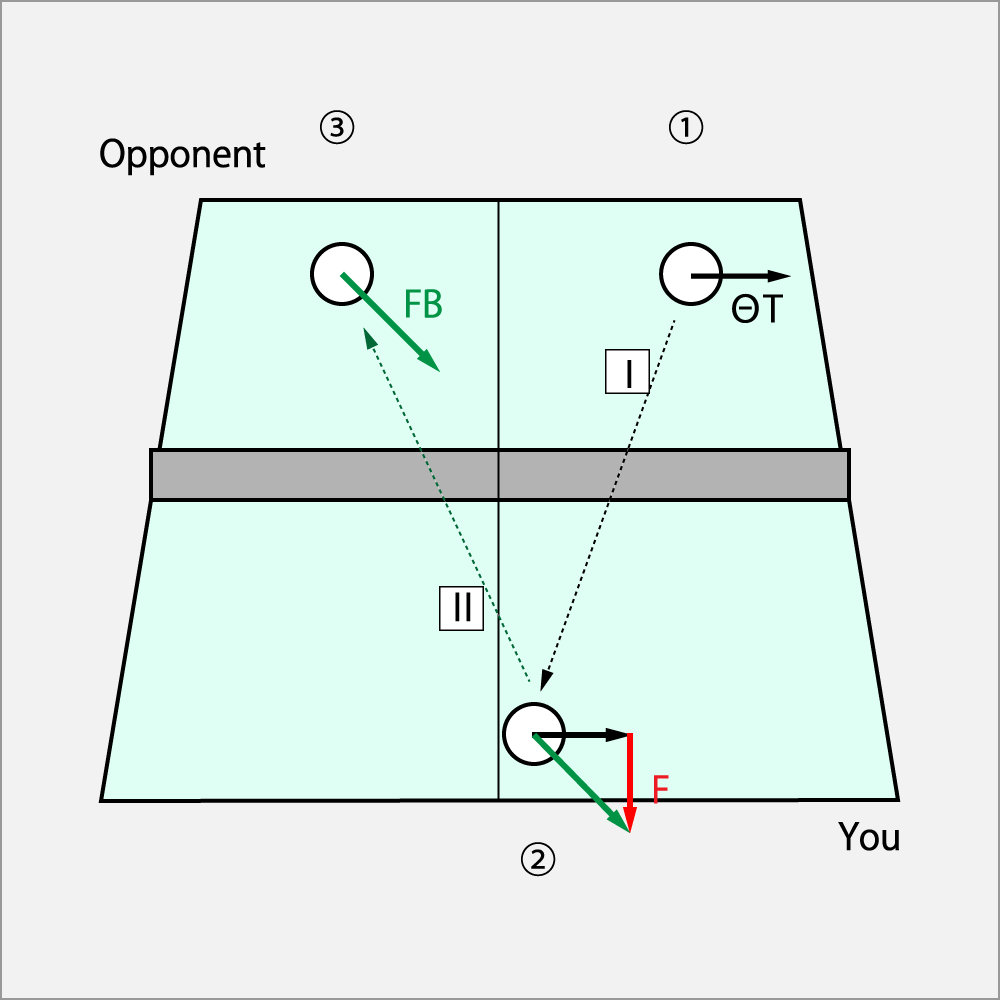
① The opponent has serviced with ΘDrive (ΘT) to your racket foreside.
② You block with Fcork (F) to the spin on the line Ⅰ.
③ The ball will be returned to the opponent as Fcork⋅Cut (FB) on the Ⅱ to the opponent's coat.
Equation is the following.
Cclock⋅Cut = ΘDrive + Fcork
When expressed in English initials,
FB = ΘT + F